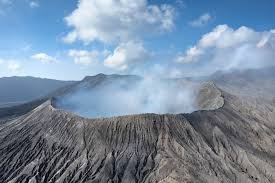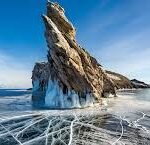Hidden deep within the dense taiga forests of Siberia’s Irkutsk region lies one of Russia’s most perplexing natural formations – the Patomskiy Crater. This massive conical depression, locally known as the “Fire Eagle’s Nest” or “Devil’s Nest,” has baffled scientists since its discovery in 1949. Rising 40 meters high with a diameter of 160 meters, this mysterious structure appears like a perfectly shaped volcano crater, yet its true origin remains hotly debated. The crater’s isolated location, strange electromagnetic readings, and tragic history of exploration have woven a tapestry of scientific intrigue and local legends that continue to this day.
The Accidental Discovery That Shocked Geologists
The Patomskiy Crater was first documented in 1949 by Soviet geologist Vadim Kolpakov during a mineral exploration expedition. Local Evenki hunters had long avoided the area, referring to it with superstitious dread, but Kolpakov became the first scientist to document the anomaly. His initial measurements revealed a structure unlike any known geological formation – a perfect cone with a flattened top and a small mound at its center. The most puzzling aspect was the crater’s age estimates; while it looked freshly formed, tree growth patterns suggested it had existed for at least 250 years. Kolpakov’s discovery report caused such controversy that Moscow initially dismissed his findings as impossible, until subsequent expeditions confirmed the crater’s existence.
Theories of Formation: From Meteorites to Nuclear Explosions
Numerous theories have attempted to explain the Patomskiy Crater’s origin. Early Soviet scientists proposed a gaseous volcanic eruption, though no volcanic activity exists in the region. The 1960s saw speculation about a secret nuclear test, despite the crater predating atomic weapons. Meteorite impact theories gained traction after the 1908 Tunguska event, but no extraterrestrial material has been found. In 2005, a Russian Academy of Sciences expedition proposed a unique “gas hydrate explosion” theory, suggesting methane ice beneath the permafrost violently erupted. Most recently, researchers have noted similarities to kimberlite pipes (diamond-bearing volcanic tubes), though no diamonds have been discovered. The lack of consensus only deepens the crater’s mystery.
The Deadly Curse of Exploration
The Patomskiy Crater has claimed several lives under mysterious circumstances, earning its “Devil’s Nest” nickname. In 2005, lead researcher Evgeny Vorobiev died suddenly of a heart attack just kilometers from the crater during an expedition. Local Evenki guides refused to approach the site afterward, claiming ancestral spirits guarded it. Earlier, in 1963, two geologists disappeared near the crater; their bodies were found weeks later with no obvious cause of death. Modern expeditions report equipment malfunctions, compasses spinning wildly, and persistent feelings of unease. Some researchers have measured unusual electromagnetic fluctuations around the crater’s rim, though the source remains unidentified. These incidents have fueled speculation about the site containing unknown energy phenomena or even being an ancient man-made structure.
The Bizarre Biological Anomalies
Surrounding vegetation shows strange adaptations near the crater. Trees exhibit accelerated growth rates closer to the formation, with some specimens showing cellular structures resembling much older trees. Scientists have noted a complete absence of animal tracks within 100 meters of the crater’s edge, though wildlife is abundant in the surrounding taiga. Most remarkably, water samples from the small lake at the crater’s base contain microorganisms found nowhere else in Siberia, with DNA sequences that challenge current biological classification. Some researchers speculate these microbes might represent ancient lifeforms preserved in permafrost and released during the crater’s formation. The Russian Academy of Sciences has designated the area a “unique biological reserve” while studies continue.

Indigenous Legends and the Fire Eagle
The local Evenki people have oral traditions describing the crater’s formation long before its scientific discovery. Their legends speak of a “fire eagle” that descended from the sky in a ball of flame, creating the depression as its nest. Shamans considered the site a portal to the underworld and performed rituals to appease the spirits believed to guard it. One obscure Evenki tale tells of an entire nomadic group that camped near the crater in the 18th century and vanished without trace. Modern Evenki hunters still report seeing strange lights above the crater at night and avoid the area during certain lunar phases. These accounts have led ufologists to speculate about extraterrestrial connections, though no concrete evidence supports these claims.
Modern Scientific Investigations
Recent expeditions have employed advanced technology to study the crater. Ground-penetrating radar reveals a complex underground structure extending at least 100 meters below the surface. In 2020, a team from Tomsk Polytechnic University discovered unusual iron particles in soil samples that don’t match known meteoritic compositions. Most intriguingly, core samples show layers of burnt organic material at precise depths, suggesting multiple high-temperature events in the crater’s history. The Russian government has classified some research findings, citing “national security implications,” which has only fueled speculation. Current leading theory suggests the crater may represent a previously unknown type of geological phenomenon caused by high-pressure gas eruptions interacting with permafrost layers.
Climate Change and the Crater’s Evolution
As Siberia’s permafrost thaws due to global warming, the Patomskiy Crater is undergoing visible changes. Satellite imagery shows the structure’s height has decreased by nearly 3 meters since 2000, while the central mound is sinking at an accelerating rate. Thermokarst lakes around the crater have expanded dramatically, suggesting subsurface ice melting. Scientists worry this thawing could trigger another gas release event, potentially replicating the crater’s original formation process. Monitoring stations now track methane emissions and ground stability, with evacuation plans prepared for nearby research stations. These developments have made the crater an important case study in Arctic climate change impacts on geological stability.
The Future of Siberia’s Greatest Geological Mystery
Despite decades of study, the Patomskiy Crater continues to guard its secrets. Plans for a major international research initiative were postponed indefinitely following Russia’s 2022 geopolitical shifts, leaving many questions unanswered. The site’s remote location (requiring a 400km helicopter journey from the nearest town) and harsh climate limit investigation opportunities. Some theorists now suggest the crater might be part of a network of similar unexplained formations across Siberia’s vast wilderness, waiting to be discovered. As technology advances, scientists hope future expeditions may finally unravel the truth behind this enigmatic structure that has defied explanation for over 70 years.
The Patomskiy Crater stands as a testament to Earth’s capacity for mystery – a perfect natural anomaly that challenges our understanding of geological processes. Whether ultimately proven to be a rare gas eruption site, an unknown impact structure, or something more extraordinary, this Siberian enigma continues to captivate explorers, scientists, and mystery enthusiasts worldwide. Its isolated location and ominous reputation ensure the “Devil’s Nest” will likely keep its secrets for generations to come, reminding us how much we still have to learn about our planet’s hidden wonders.
Go to main page


